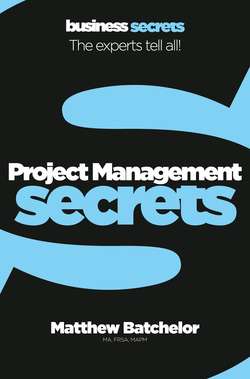Читать книгу Project Management - Matthew Batchelor - Страница 6
Оглавление1.1 Projects are not tasks
Before getting started, it’s worth understanding what a ‘project’ actually is. The UK Association of Project Management (APM) defines a project as ‘a unique, transient endeavour undertaken to achieve a desired outcome’. In other words, a project has a defined beginning, middle and end, and a stated purpose.
Managing a project therefore differs from fulfilling a task, programme or professional work role. The following list helps to differentiate a project from other types of work.
• A project has a specified outcome. Unlike a job or work role where you are likely to have aims that change over time, a project sets out to achieve a stated goal (or goals) within a certain timetable.
• A project involves a number of different tasks. These tasks are generally defined as the smallest useful units of work. Related tasks are often combined into work packages or activities, which can be assigned to a single supplier or team.
• Each task will ideally be carried out by someone with suitable skills. Project working therefore calls for a multidisciplinary approach. The more complex a project, the greater the degree to which people and tasks need to be carefully matched.
one minute wonder Are you still confused about what a project is? Take a moment to consider this: despite their very different sizes, delivering the 2012 London Olympics and relocating your team to an office down the corridor are both projects. ‘Being a sales rep’ is not a project because it is an ongoing work role. On the other hand, a plan ‘to deliver a 20 per cent increase in sales leads through the installation of a new marketing database’ is likely to fulfil the critera for a project.
• A project is self-contained. It has its own aims, timetable and resources. That’s not to say that projects should be sealed off from the rest of the business – they can and should utilize skills and resources possessed by the wider organization, and the lessons learned should be exported to other colleagues and teams, and used on future projects.
Though they are capable of standing alone, projects may be linked to a wider programme of work, or be part of a portfolio of similar projects.
Adopting a project approach can yield significant benefits by defining clear outcomes against which to measure the input of resources and the quality of the project team and leadership. A project’s resources can be human, or financial or physical – equipment and so on.
A project should have a clear time frame and be undertaken to achieve a desired outcome.
